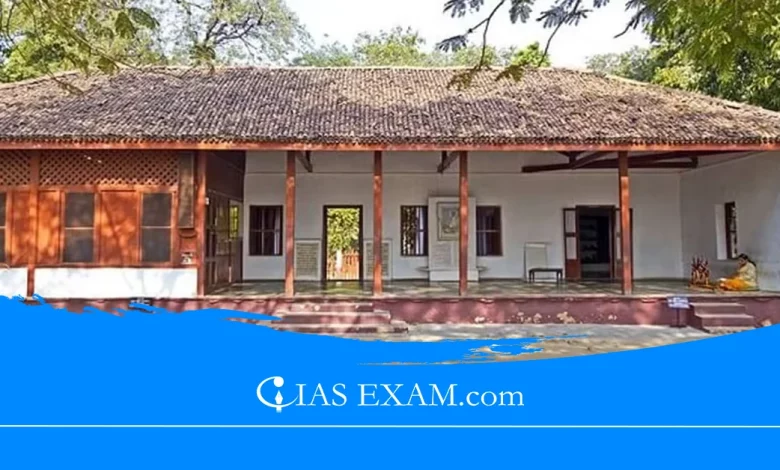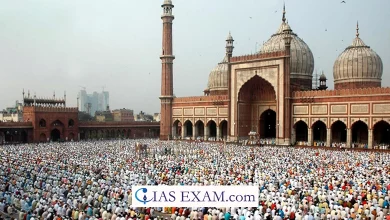Daily Current Affairs for UPSC
Sabarmati Gandhi Ashram Redevelopment Project
Syllabus- History [GS Paper-1]

Context
The Prime Minister has recently launched a master plan for the Sabarmati Gandhi Ashram redevelopment project.
Key Highlights
- The central government and Gujarat government are jointly implementing the Gandhi Ashram Memorial and Precinct Development Project.
- The redevelopment and restoration plan is based on an aerial picture from 1949 of the ashram and on the ashram’s documented bills.
- A ‘Mohan to Mahatma Park’, an arboretum on the way to have trees from “all states and Union Territories”, a herbal garden shaped in the famous pose of Gandhi walking together with his group of workers , a meditation hall, and a ‘dhyan kendra’: those had been proposed.
Historical significance of the Gandhi Ashram at Sabarmati
- Setting up of Ashrams: Mahatma Gandhi set up 5 settlements throughout his lifetime — in South Africa (Phoenix Settlement in Natal, and Tolstoy Farm outside Johannesburg), where he lived from 1893 to 1914, and 3 in India, in which he arrived in 1915.
- He set up the first ashram in Ahmedabad in Kocharab in 1915.
- Sabarmati Ashram: In 1917, Gandhiji founded the ashram at Sabarmati — his fourth ashram — on the western bank of the Sabarmati River.
- The place was to the north of the village of Juna Vadaj, beyond the Chandrabhaga rivulet, a tributary of the Sabarmati.
- Time Spent in Ashram: Gandhi spent the maximum time here, and it was the cradle of eight major movements related to India’s war for independence.
- Movements Launched: Apart from the Dandi March that Gandhiji began from here on March 12, 1930, he also launched the Champaran Satyagraha (1917), the Ahmedabad mills strike and Kheda Satyagraha (1918), the Khadi movement (1918), the Rowlatt Act and Khilafat Movements (1919), and the Non-Cooperation movement (1920) while living in Sabarmati.
Other major Movements and Initiatives by Gandhi
- Champaran Satyagraha (1917): The ashram served as a base for Gandhi’s involvement in the Champaran Satyagraha, a movement towards oppressive indigo planters in Bihar.
- Khadi Movement (1918): Gandhi initiated the Khadi motion from Sabarmati Ashram, promoting the use of hand-spun fabric as a method to boycott foreign items and promote self-reliance.
- Ahmedabad Mill Strike (1918) and Kheda Satyagraha: Gandhi led the employees’ strike in Ahmedabad and the peasants’ movement in Kheda, each of which have been pivotal in India’s struggle for independence.
- Non-Cooperation Movement (1920): The ashram performed a vital position in Gandhi’s call for non-cooperation with the British government, urging Indians to boycott British goods and institutions.
- Dandi March (1930): One of the most iconic activities in India’s freedom warfare, the Dandi March, started from Sabarmati Ashram. Gandhi, along with his followers, marched to Dandi to protest against the salt tax imposed by the British.
Source: The Indian Express
UPSC Mains Practice Question
Q.Many voices had strengthened and enriched the nationalist movement during the Gandhian Phase. Elaborate. (2019)





.png)



